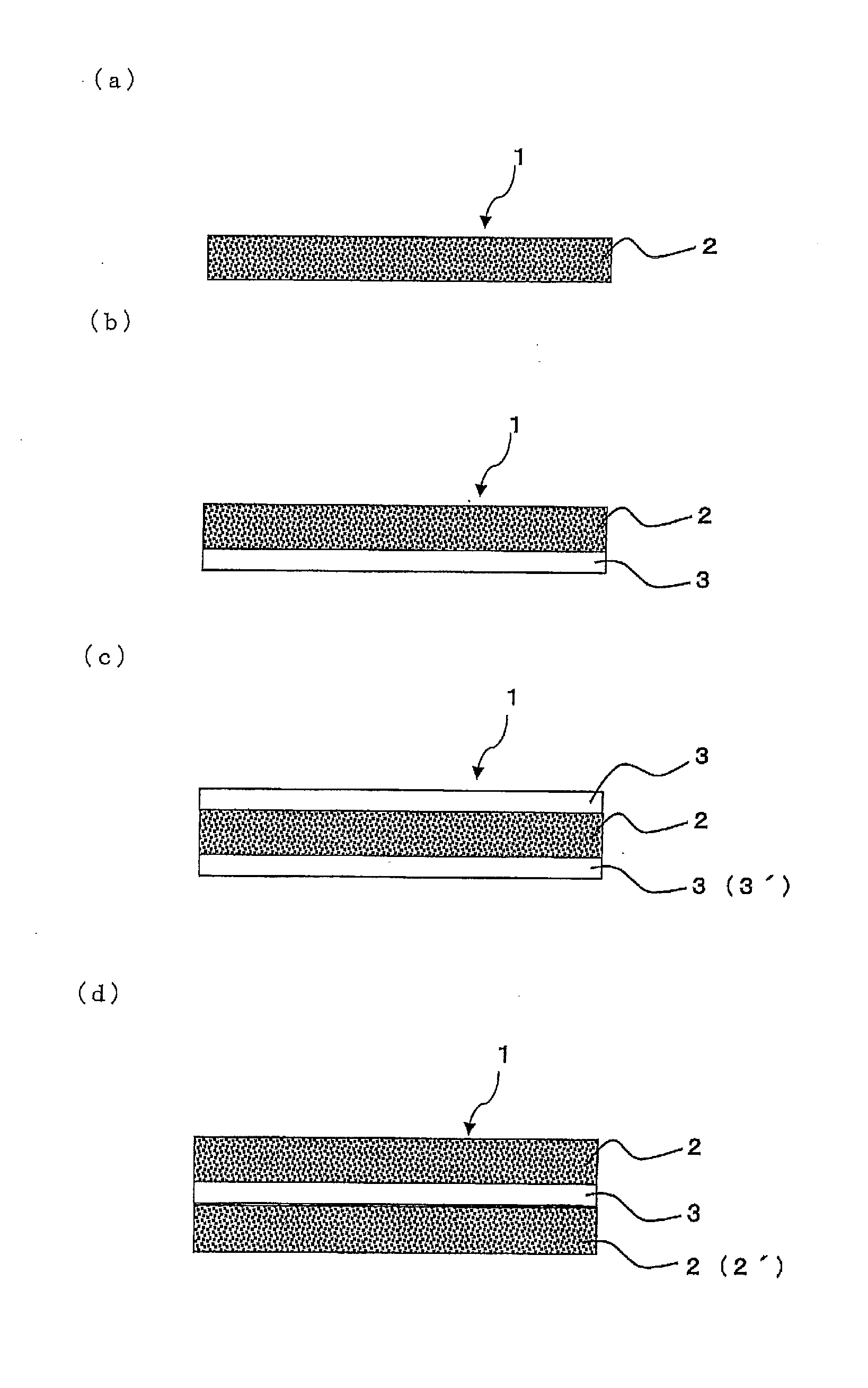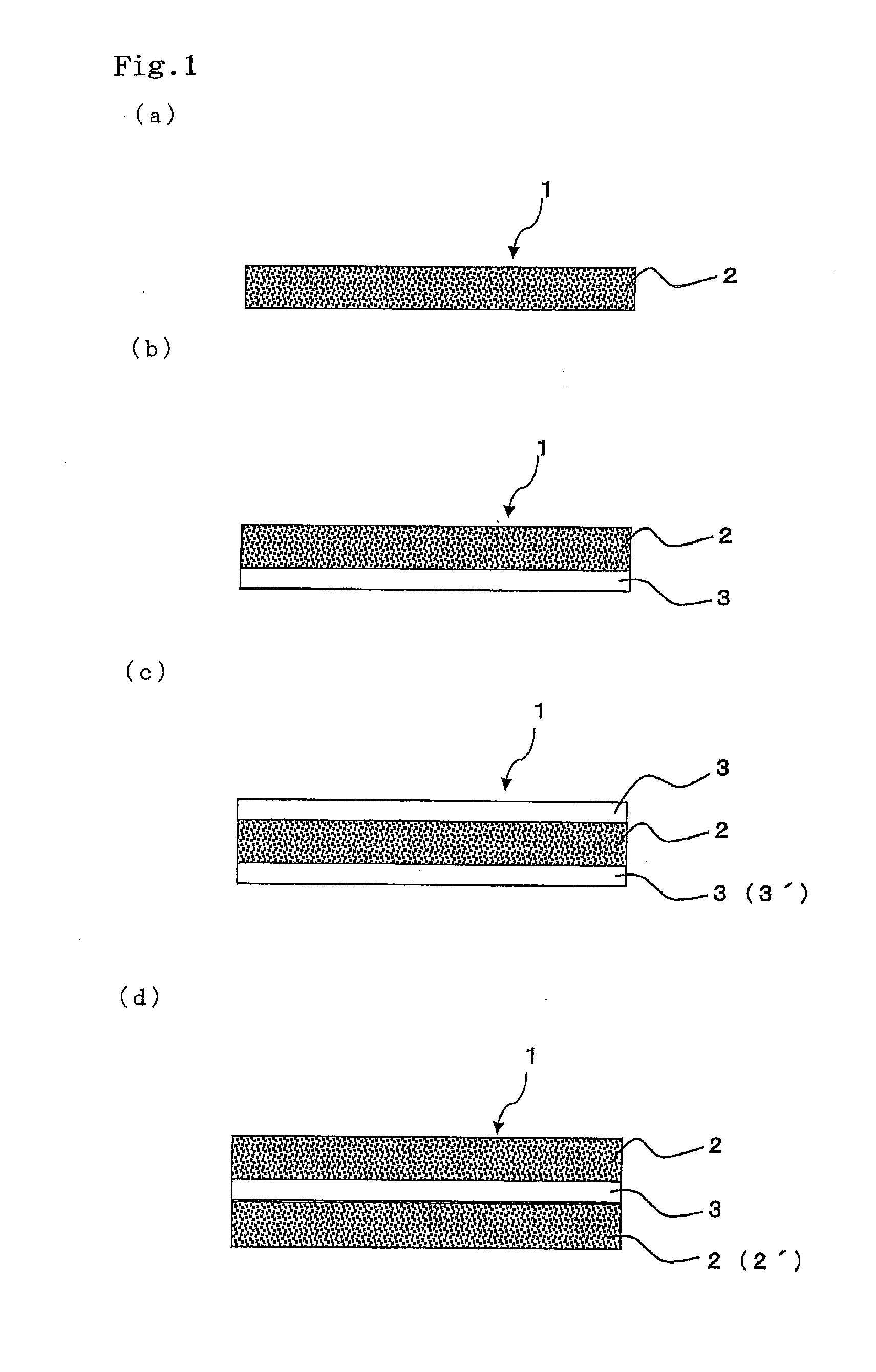Electrically insulating resin sheet for motors and process for production thereof
a technology of electric insulation resin and motor, which is applied in the direction of plastic/resin/waxes insulators, windings insulation materials, transportation and packaging, etc., can solve the problems of reduced flexibility of resin sheets, high surge voltage generated by inverters entering the motor, and reduced insulation characteristics, etc., to suppress the deterioration of insulation members, excellent heat resistance, and high partial discharge inception voltage
- Summary
- Abstract
- Description
- Claims
- Application Information
AI Technical Summary
Benefits of technology
Problems solved by technology
Method used
Image
Examples
example 1
[0103]A single-layer sheet of 120 μm thickness was prepared from a polyetherimide resin (manufactured by SABIC, trade name “ULTEM 1000”, Tg 217° C., specific gravity 1.27) by a twin-screw extruder. The unfoamed single layer sheet was placed in a 500 cc pressure vessel, and impregnated with carbon dioxide by keeping the vessel in a carbon dioxide atmosphere of 200° C. and 25 MPa for 0.5 hour. Then, after having returned this sheet to atmospheric pressure at a rate of 300 MPa / sec, a porous resin layer made of polyetherimide of 200 μm thickness was obtained. The obtained porous resin layer had an average cell diameter of 4.1 μm, a porosity of 55%, and a relative permittivity of 1.8 (1 GHz).
example 2
[0104]A polyetherimide resin (manufactured by SABIC, trade name “ULTEM 1000”, Tg 217° C., specific gravity 1.27) and a polypropylene glycol as a phase separation agent (manufactured by NOF Corporation, trade name “UNIOL D-400”, average molecular weight 400) in the weight ratio of 100:75 were dissolved in N-methyl-2-pyrrolidone (NMP) to obtain a thermoplastic resin composition having a solid concentration of 20%. This thermoplastic resin composition was applied using an applicator, and dried at 110° C. for 10 minutes afterwards to evaporate off NMP, thereby to obtain a thermoplastic resin sheet of 100 μm thickness.
[0105]The thermoplastic resin sheet was placed in a 500 cc pressure vessel, and carbon dioxide was injected thereto at a flow rate of about 15 L / min as the gas amount in an atmosphere of 25° C. while keeping the increased pressure of 25 MPa. After evacuation of the carbon dioxide, an extraction procedure for polypropylene glycol was carried out for 5 hours to make a porous ...
example 3
[0106]A porous resin layer having a 200 μm thickness was obtained in the same manner as in Example 1, except that a single layer sheet having a 120 μm thickness was obtained by kneading a polyetherimide resin (manufactured by SABIC, trade name “ULTEM 1000”, Tg 217° C., specific gravity 1.27) and a polyetherimide resin (manufactured by SABIC, trade name “ULTEM XH6050”, Tg 247° C., specific gravity 1.30) in a twin-screw extruder so that the ratio of both polyetherimide resins became 40:60 by mass. The average cell diameter of the porous resin layer obtained was 3.9 μm, the porosity was 49%, and the relative permittivity was 1.9 (1 GHz).
PUM
| Property | Measurement | Unit |
|---|---|---|
| Temperature | aaaaa | aaaaa |
| Diameter | aaaaa | aaaaa |
| Frequency | aaaaa | aaaaa |
Abstract
Description
Claims
Application Information
 Login to View More
Login to View More - R&D
- Intellectual Property
- Life Sciences
- Materials
- Tech Scout
- Unparalleled Data Quality
- Higher Quality Content
- 60% Fewer Hallucinations
Browse by: Latest US Patents, China's latest patents, Technical Efficacy Thesaurus, Application Domain, Technology Topic, Popular Technical Reports.
© 2025 PatSnap. All rights reserved.Legal|Privacy policy|Modern Slavery Act Transparency Statement|Sitemap|About US| Contact US: help@patsnap.com


